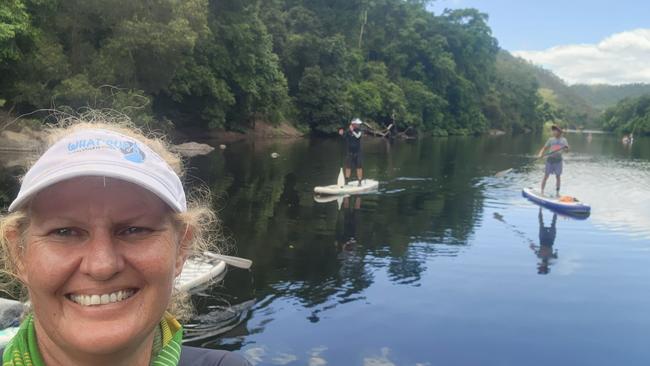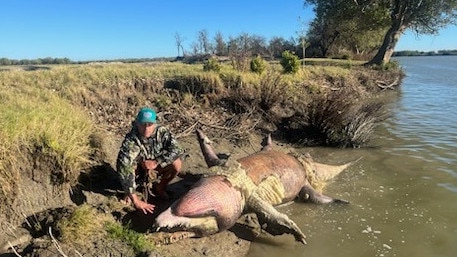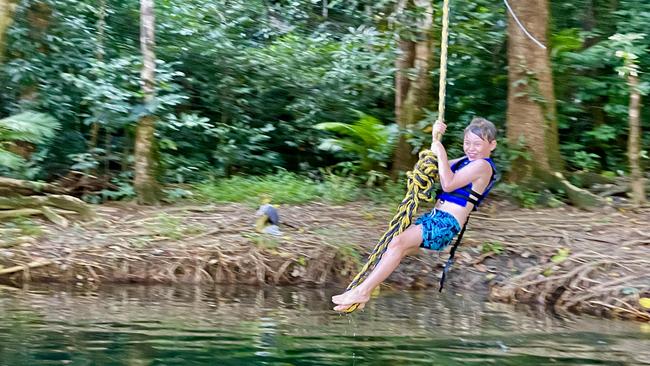Mapped: Croc sightings, attacks, removals, problem salties
A map shows where crocodiles have been spotted across the Queensland in the past three months as the state government prepares to review its crocodile management plans.
Cairns
Don't miss out on the headlines from Cairns. Followed categories will be added to My News.
An increase in crocodile populations and their spread into new territories combined with human population movement into croc country is leading to increased conflict in the Far North.
Crocodiles have been spotted in new areas further up rivers used by popular adventure tourist attractions forcing them to make changes to their operations and more casual waterway users have reported sightings to the Department of Environment and Science.
“In recent years, DES has noted a steady increase in the number of crocodile sightings in Croc Country that have been reported, however this does not necessarily correlate with any actual increase in the crocodile population,” a department spokesman said.
“As urban development makes further inroads into crocodile habitat, there are naturally more people within that habitat to see crocodiles.”
DES estimates that the population of non-hatchling crocodiles in the state was between 20,000 and 30,000.
The Cairns Post has mapped the most recent sightings reported to DES along with the attacks, encounters and footage that has been documented across Queensland in the last year.
Earlier this year What’SUP Cairns owner Ally Chadburn was forced off the Mulgrave River by a big croc, and confirmed sightings at a campground more than 45km from where the river meets the sea.
Ms Chadburn said that being crocwise was always front and centre for her operations but sightings in new locations were changing where she can safely operate her business.
“I always complete river checks and fly drones to check the areas we are using before I let anyone on the water,” Ms Chadburn said.
“I knew it would happen but now I am having to forfeit river locations or drive up to two hours to find a safe paddling spot which has a big impact on my business.”
In the same month an oar munching croc chased the Cairns rowing club off the water while they re-evaluated their safety procedures.

The increase in croc encounters is leading to strong debate about how crocodile populations should be managed with outdated management maps due for a much needed update by the state environment authority.
Crocodiles have literally been in the firing line during the debate with up to 14 salties recently shot in the Norman River in the gulf country and a serial croc killer decapitating two iconic crocodiles in the Daintree.

Maps currently guiding saltwater croc management drawn up in 2018 have come under strong criticism for not keeping pace with croc population increases, new semirural housing development around Cairns and tourism use of Far North rivers.
In August Jawajawa Rangers patrolling an area upstream of the Fisheries Crossing bridge on the Mulgrave River reported sighting a 3-4m saltwater crocodile sunning itself on the river bank to the horror of river users and anger of traditional owners.
Cairns Adventure Group operates white-water raft and tubing tours on the Mulgrave, Barron and Tully rivers.
Director Roderic Rees, said his company was assessing the risk of croc attacks every day.
“Croc management zoning around Cairns and surrounding areas needs a serious review,” he said.

Traditional owner Aggie Munro said crocs have been seen at the Goldsborough Valley Campgrounds where there are no croc warning signs in an area long believed to be safe.
A new Crocwise Strategy currently being formulated by the Department of Environment is being developed in consultation with local government, First Nations peoples, tourism bodies and special interest groups throughout Croc Country.
Since 1975, there have been 46 estuarine crocodile attacks on humans in Queensland, 16 of which have been fatal.
More Coverage
Originally published as Mapped: Croc sightings, attacks, removals, problem salties





